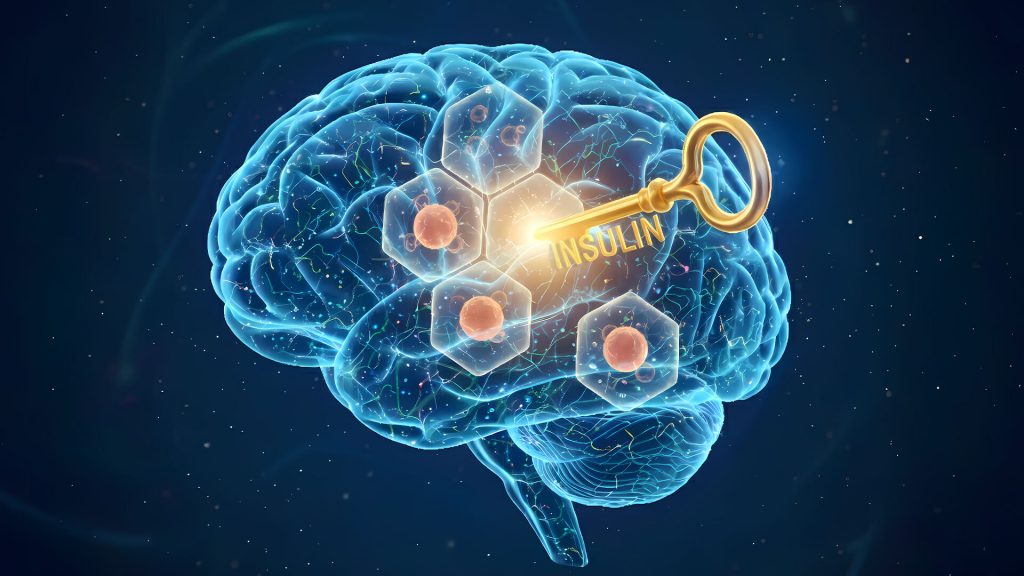From the brain to the pancreas: Knowing the different types of diabetes

What if everything you thought you knew about diabetes was just the beginning? Insulin, the body’s “master hormone,” is vital for both blood sugar and brain function.
Beyond Type 1 and Type 2, doctors are now identifying Types 3 and 5, showing that diabetes affects more people in more ways than previously understood.
Think of insulin as a key that unlocks cells so sugar from your blood can flow in and give your body and brain the energy they need. Without enough insulin, sugar builds up in the bloodstream, starving cells and causing a cascade of health problems throughout the body.
Let’s begin with what most people know: Type 1 and Type 2 diabetes. According to the American Diabetes Association, Type 1 is an autoimmune condition. The body attacks and destroys the insulin-producing beta cells in the pancreas, leaving the person unable to make enough insulin to regulate their blood sugar.
Type 2 diabetes, on the other hand, occurs when the body doesn’t use insulin properly, causing insulin resistance. To compensate, the pancreas produces extra insulin. Over time, the pancreas loses its ability to keep up, leaving blood glucose levels elevated, according to the ADA.
The Centers for Disease Control and Prevention says about 38.4 million people in the U.S. had diabetes in 2021, representing nearly 12% of the population. With numbers that high, researchers have begun digging deeper into how insulin affects more than just blood sugar, including the brain.
More than Types 1 and 2
Suzanne de la Monte, a professor of neurosurgery and neuropathology at Brown University, focuses on brain insulin resistance and its link to cognitive decline and behavioral changes.
She noted that decades of research centered on Type 1 and Type 2 diabetes slowed progress in other areas. But with clinical trials for popular medications like Ozempic and Wegovy, studies on GLP-1 and its broader effects have started to expand.
“Now we are headed in [the] direction of addressing the metabolic problem in the brain. And I think it’s a very exciting time for working with neurodegeneration,” she told Straight Arrow News. “Because if you can improve the metabolism, you can improve brain function and basically stop the epidemic, a pandemic.”
The rise of ‘Type 3 diabetes’
De la Monte’s work helped popularize the term “Type 3 diabetes” — an ”idea that she said came almost by accident. In simple terms, she found that Alzheimer’s disease looks a lot like diabetes of the brain.
Her research shows that the brain develops insulin resistance during Alzheimer’s, similar to the body’s stalled response to insulin in patients with Type 2 diabetes.
Her research reframed Alzheimer’s not just as a disease of plaques and tangles but as a metabolic disorder where the brain itself is insulin-deficient and resistant.
“Because it can’t make it or not enough or can’t respond to it,” she said. “That is type one plus type two equals type three, and that’s where that came from.”
How insulin resistance affects the brain
When brain cells can’t use insulin the right way, they struggle to get the energy they need. Over time, this can trigger problems similar to what scientists see in Alzheimer’s — memory loss, buildup of plaques and tangles and nerve cell damage.
In one of her studies, de la Monte even showed that when insulin signaling in the brain is disrupted in lab models, the changes closely mimic what happens in Alzheimer’s patients. That’s why she and others argue that the term “Type 3 diabetes” makes sense; it captures how this disease overlaps with both Type 1 and Type 2 diabetes but is mostly confined to the brain.
She also found insulin-sensitizing drugs, the same kinds used for Type 2 diabetes, can reduce some of the brain damage and memory loss in experiments.
The implications extend far beyond the lab. Rising rates of Alzheimer’s and cognitive decline over the past four decades, she noted, cannot be explained by genetics alone.
“That can’t be genetic. We don’t have genes that turn over that quickly,” de la Monte said. “So it must be something that we’re doing, and that’s really the key part of the whole thing. Because if it’s something we’re doing, it’s also something we can stop.”
Drawing the line between two diseases
Not everyone agrees with de la Monte’s framing of Alzheimer’s as “Type 3 diabetes.” The Alzheimer’s Association cautions that the term can blur important distinctions.
“Alzheimer’s disease is not diabetes, nor is it a form of diabetes. While there are commonalities between Alzheimer’s and diabetes, labeling Alzheimer’s as ‘Type 3 diabetes’ is inaccurate and misleading,” said Courtney Kloske, Ph.D., the association’s director of scientific engagement.
Kloske noted that Alzheimer’s is primarily defined by abnormal protein buildup in the brain, leading to memory loss and cognitive decline, while diabetes is marked by chronically high blood sugar and cardiovascular complications.
”Problems with insulin function in the brain is not equivalent to diabetes and requires a nuanced understanding separate from diabetes management,” Kloske said.
The Alzheimer’s Association is supporting research to explore these links, including early-stage clinical studies testing whether diabetes drugs like metformin could help protect brain health, but emphasizes that the two diseases remain distinct.
Understanding Type 5 diabetes: When nutrition shapes the pancreas
Other forms of diabetes can be situational, such as Type 5, which is linked to prolonged undernutrition or malnutrition, according to the International Diabetes Federation. When people, especially children, live in chronically food-insecure situations or poverty, it can affect the development of the pancreas, reducing its ability to produce insulin. This leaves the body less able to regulate blood sugar properly.
“They need to be fed properly and given protein and the like, because there’s no pill for that. I don’t care what anybody says,” de la Monte said.
Malnutrition-related diabetes was first identified in Jamaica in 1955. People are frequently misdiagnosed with Type 1 diabetes, but unlike Type 1, these patients do not develop ketones in their urine or experience ketosis.
According to an upcoming study, this form of diabetes is disproportionately found in low and middle-income countries, where malnutrition is widespread and access to advanced diabetes care is limited.
Treatment typically focuses on improving nutrition and using oral diabetes medications rather than relying on insulin. Researchers believe recognizing Type 5 diabetes as a separate category can help guide research, improve care and raise awareness of its growing impact on vulnerable populations.
Living with hidden metabolic problems
Many people may not realize they have diabetes until it becomes severe.
“It is quite possible to live with low levels for a long time,” de la Monte told SAN.
Diabetes is just one part of a broader family of insulin resistance disorders. Conditions such as fatty liver disease, polycystic ovarian syndrome (PCOS) and certain kidney diseases can exist quietly, sometimes without obvious symptoms.
Often, these issues are only detected when routine blood tests reveal abnormalities or when serious complications appear.
De la Monte emphasized the need for better screening tools that don’t rely solely on traditional healthcare visits. Wearable devices, like smartwatches, can monitor key health metrics and alert people early when something is off.
Understanding metabolic health is critical. A person’s metabolism affects energy levels as well as brain function. When glucose use is impaired, the brain may shift to alternative fuels, including fatty acids and proteins, to keep functioning.
The takeaway, de la Monte said, is that lifestyle matters.
“We need to focus on what we eat, how we eat and exercise. You don’t need any doctor to tell you that,” she said. “The goal is to improve metabolism throughout the body, but especially in the brain.”
The post From the brain to the pancreas: Knowing the different types of diabetes appeared first on Straight Arrow News.





